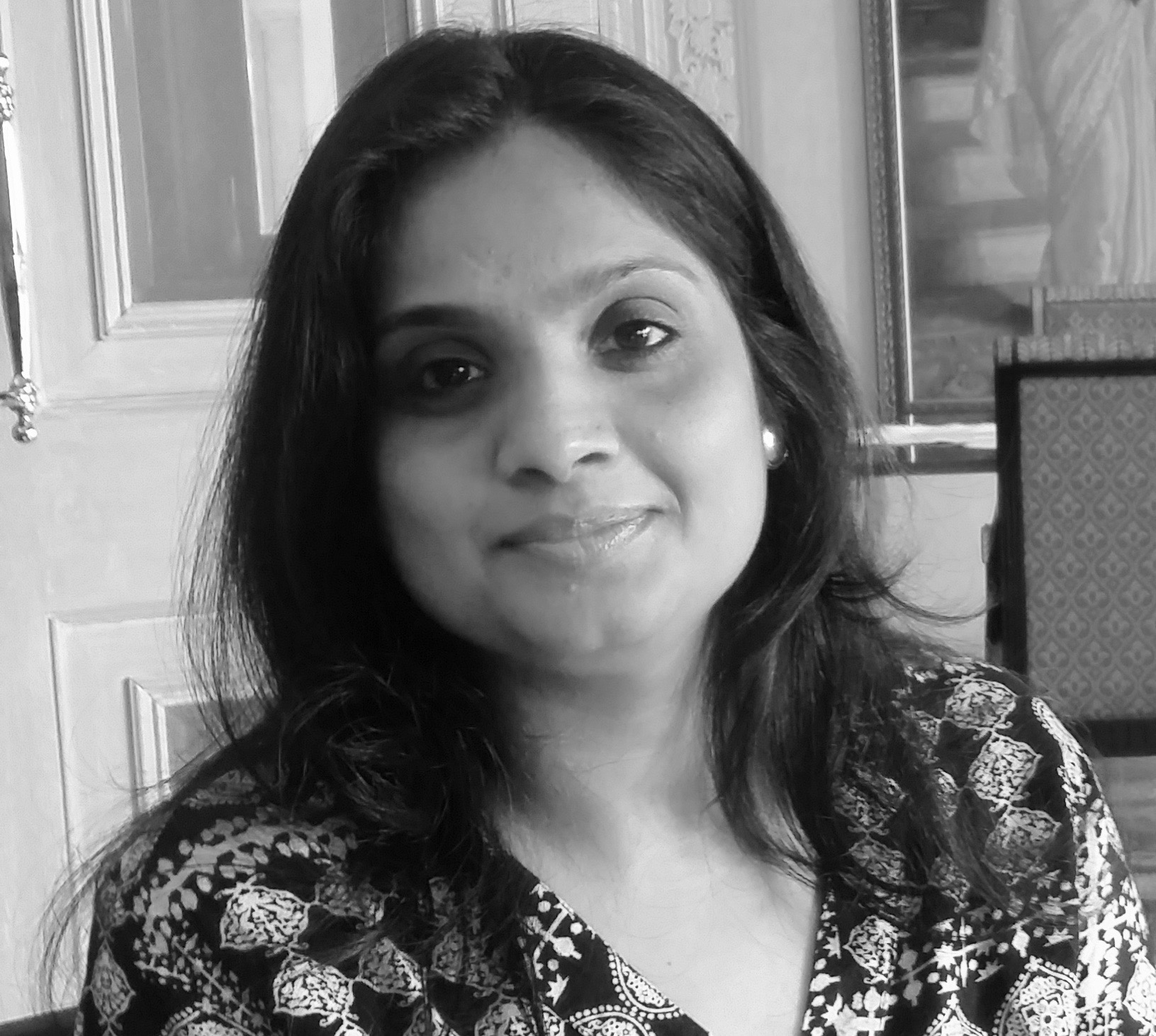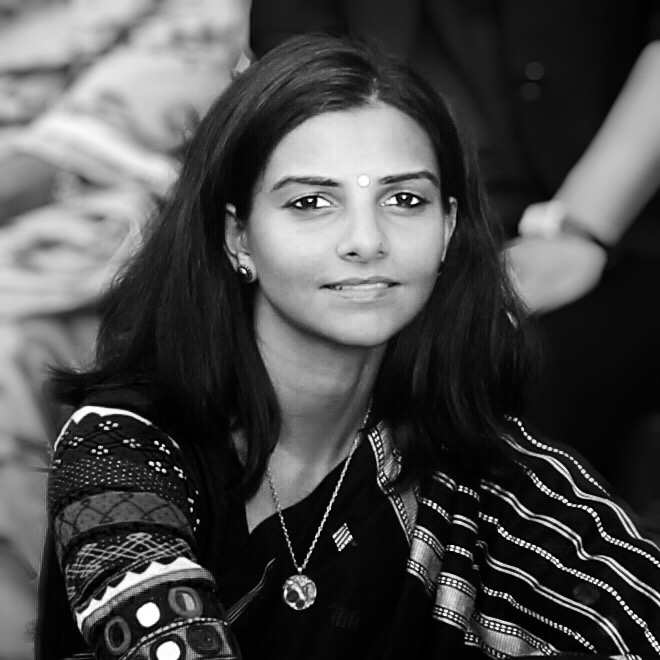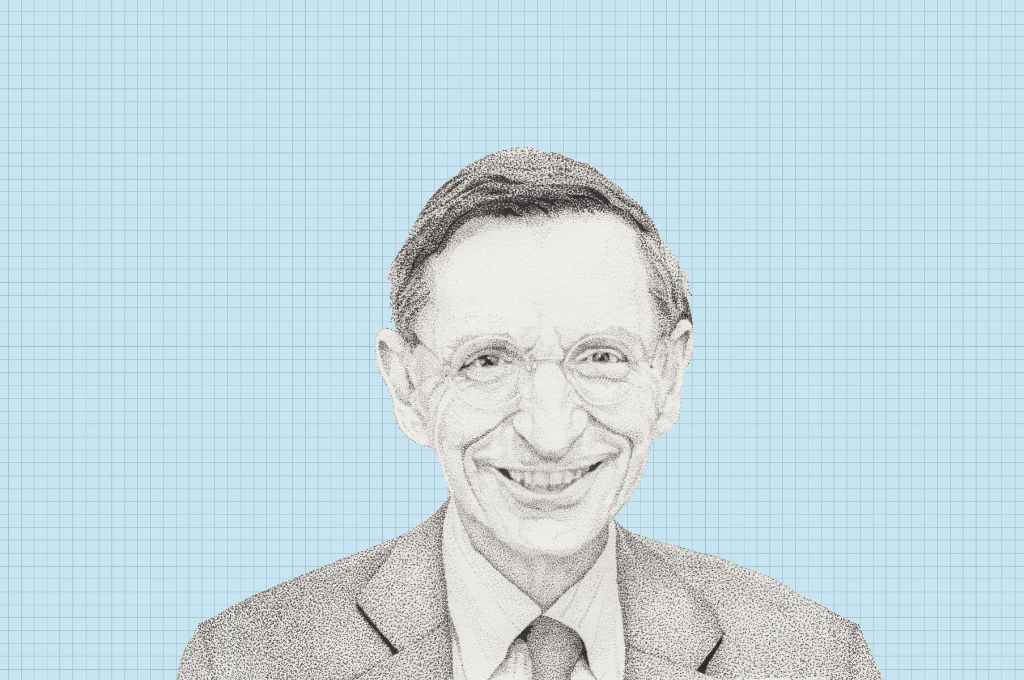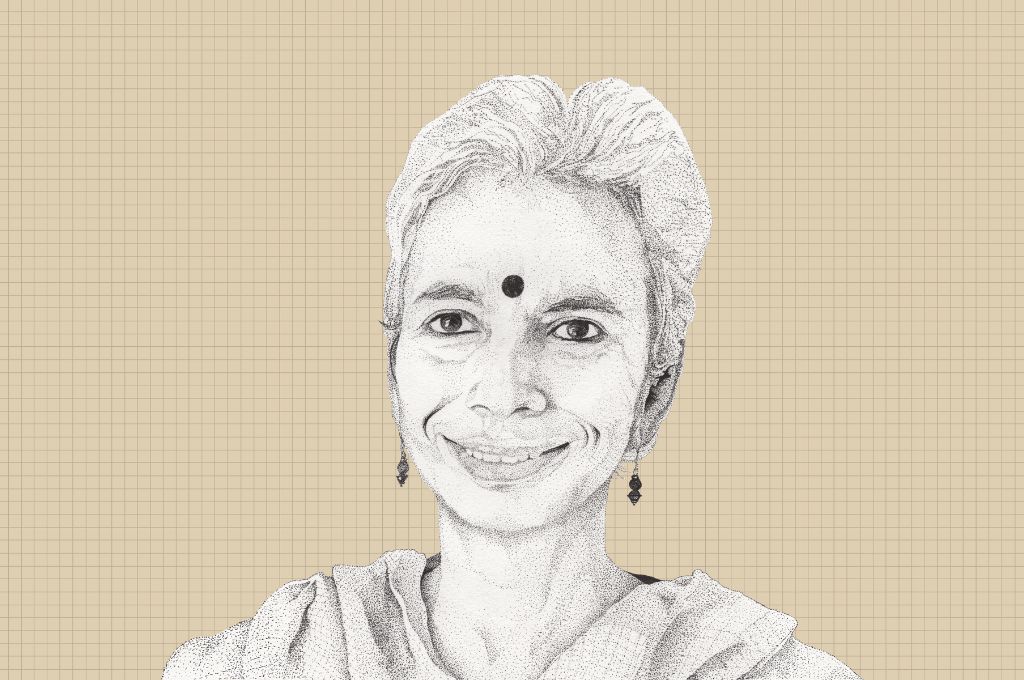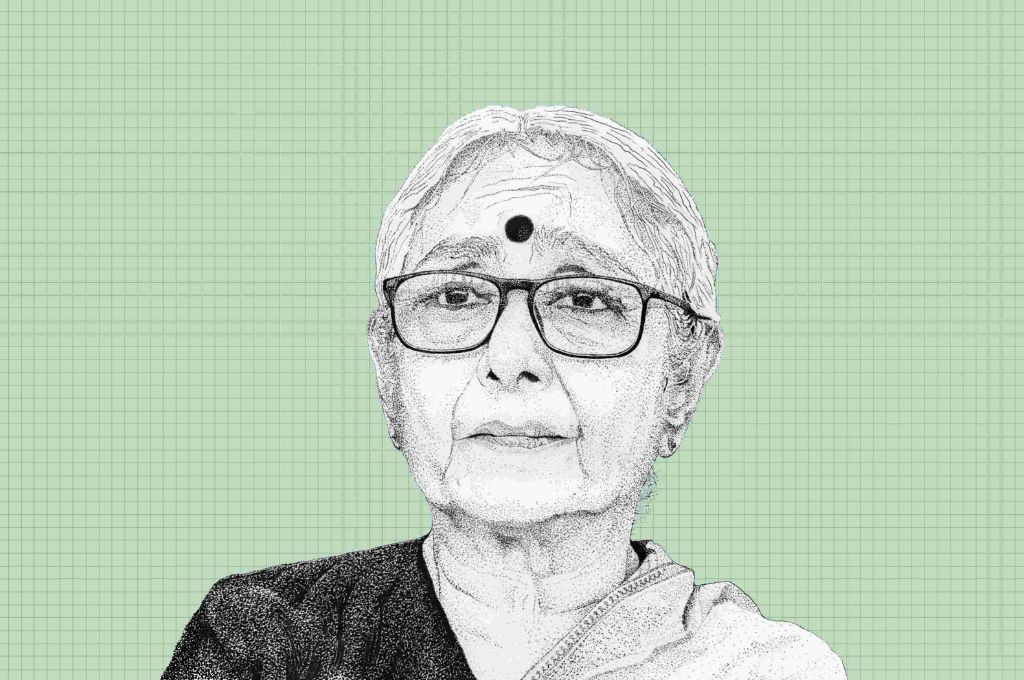A prominent voice in India’s feminist movement for nearly five decades now, Kamla Bhasin has been associated with iconic organisations working for gender equality, including Jagori and Sangat A Feminist Network. Having started her career as a nonprofit development worker in the state of Rajasthan in the early ‘70s, and then having worked for 27 years through the UN, Ms Bhasin’s experience at the grassroots exposed her to the deep gender inequalities inherent in a society already divided along class and caste lines, and led to her transformation into a feminist development activist.
In this interview with IDR, she discusses the evolution of and way forward for the Indian feminist movement, as well as, how economic development can’t guarantee gender equality.
Your work as a development activist in India began in 1972—46 years ago. That decade was also unique and pivotal in India’s political and social history. Can you talk about your experience working at the grassroots at that time?
I joined Seva Mandir in Udaipur in 1972 after returning from Germany, where I had studied Development Sociology and also taught for a while. It was during my stint with Seva Mandir that I began to understand rural India and how ineffective the prevalent theory of trickle-down economics and top-down development was. It was a complete myth.

What I saw was ‘evaporation theory’. Even if resources were given to the poor, they would eventually end up in the hands of the rich. For instance, if a farmer needed to dig a well to water his land, he would need to borrow INR 1000 from the local money lender. Even if we could help him dig his well and revive his land, thereby improving his livelihood, he would remain indebted, often unable to afford the interest rates. The moneylender, in turn, would now demand not only the principal amount, but also his fertile land. This cycle perpetuated itself over and over, taking different forms.
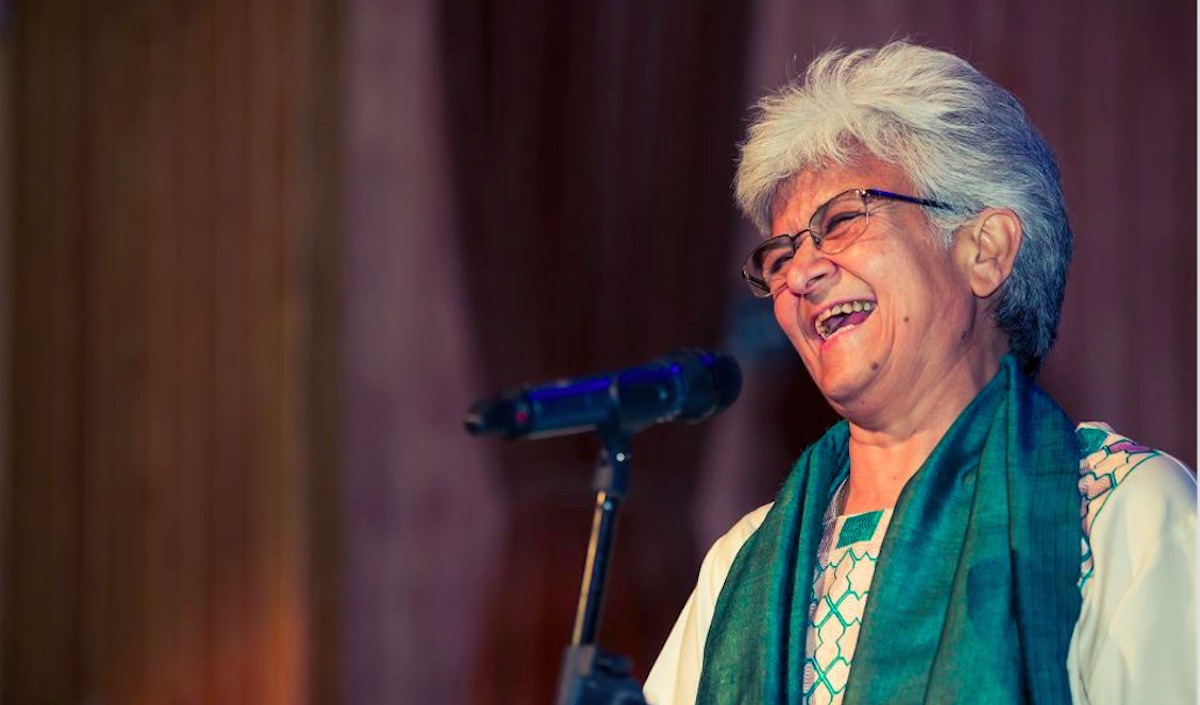
Kamla Bhasin. (Photo courtesy: Jagori)
How did your transformation from a development activist to a feminist development activist happen?
I began my career as a development activist, to deal with poverty and the exclusion of the poor. As I worked at the grassroots in Rajasthan, I increasingly found that amongst the poor, women were poorer. Amongst Dalits, women were more Dalit. Amongst the excluded, women were more excluded. So even though I didn’t begin my journey as a feminist activist, I slowly became one without even knowing the word ‘feminist’ at that time.
Most of us working in development recognise that social hierarchies and systems are closely linked. We worked with all kinds of women—poor, Adivasi, minority and so on—and often came up against social structures like caste, class and patriarchy. We fought for Dalit rights to deal with caste issues. We adopted anti-communalism to deal with the repression of minorities, and we used feminism to deal with patriarchy.
We cannot talk about class without recognising how it affects men and women differently in a gender unequal society. Similarly, we can’t get rid of patriarchy without getting rid of caste or race because all these structures are connected. In the last four-five years, people have been talking a lot about ‘intersectionality’; we have been doing this for the last 40 years.
These struggles must continue simultaneously. Some can focus on one aspect and others on different aspects, as long as there is respect for one another’s work and cross-learning.

These processes of change across caste, class, etc., unfold at different paces and different levels. They are neither linear, nor necessarily visible. When working on these issues, where does one begin?
Don’t go in with your own agenda. You can’t sit in Delhi and make a project proposal for a village in Rajasthan. You need to see what’s happening there and take up those issues.
When I was at Seva Mandir, I went in with a typical development project mindset. At the time, we were focusing on literacy. Why were we doing this? Because we thought that if we are literate, they should also be literate. That was our mistake. Why should they be literate? They don’t have food. They don’t have any income. They need those issues addressed first.
When I got there, I spent six months trying to start a literacy project. When we asked the community initially, they said they wanted the project. A few months later, when there was no progress, I grew impatient. It was then that I realised the problem. “You are blind,” they said to me. “Don’t you see that this village hasn’t had water for the last two years?” Rajasthan was at the time going through one of the worst droughts in its history and a literacy centre was certainly not what people wanted.
The villagers said they had only agreed to the literacy centre plan because they didn’t know who I really was or what connections I had. They were used to development workers coming to their communities for six months and then disappearing. Saying ‘yes’ to me was a way to stay out of trouble.
“What would you like?” I asked them. And their answer: “We want a well.”
So, I wrote to Oxfam, who had sanctioned my initial proposal for the centre, and asked for a well. They agreed. For the next four years, I only worked on wells.
Only if you’re willing to learn and be educated by the people you are there to serve, will you make progress.
You may go into a village with an idea or a plan. But only if you’re willing to learn and be educated by the people you are there to serve, will you make progress. When you’re willing to listen to them, you will begin to see their reality, how caste and class operate, and how unequitable society is.
We often apply a narrow lens to our work. We divide people up into ‘sectors’: water, caste, literacy, and so on. There may be 15 different government departments working in the same geographical area, but one deals only with agriculture, another with health, and a third with education. But people’s lives are not divided into these areas. It’s one life. Development approaches, thus, need to be interconnected.
There have been a few ‘waves’ of feminism. How has the movement evolved in India? How has the relationship between feminism and patriarchy changed over time?
Feminism, like water, is fluid. Feminists have been around forever. The first feminist was probably born the day patriarchy was born.
Because feminism is a challenge to patriarchy, it is always different, because patriarchy is not the same every where and also women have different experiences and perspectives. Because it is not a theory we are implementing, but a reality we are challenging, it is always local.
The first feminist was probably born the day that patriarchy was born.
When local feminist issues have resonated with other movements elsewhere, they become global. Today, rape, sexual harassment at work and unequal pay are global issues. Eighty-six million women said #MeToo in 2017. But dowry is not a global issue. Neither are acid throwing or honour killings.
Feminism has to be and has been like water: fluid. It takes the shape of the pot into which it Is poured. Water is H20 everywhere. Feminism is anti-patriarchy everywhere.
I have seen in my own life that some things have remained constant in our society. Violence against women is always a contemporary issue. Sati can be found even today in Rajasthan. In fact, no old issue has disappeared. Even as old issues remain, new ones get added. For instance, sex selective abortion wasn’t around when the technology wasn’t there. Before acid became easily available, men couldn’t throw it on women. The same goes with digital violence against women.
Of course, a lot of progress has been made. Today, India can have someone like Mayawati in a position of power. But we haven’t challenged religion and religious traditions enough.
Early on, when I was involved with grassroots activism while pursuing my day job as a UN officer, I became aware of the value of interconnectedness. Back then, it was easy to feel isolated, working as we were on challenging issues across rural parts of the country. Coming together, whether it was to celebrate International Women’s Day or a global conference, made us realise that we were not just drops of water. If we connected, we got to become the ocean. Joining a growing movement not only propelled its own momentum, it also expanded our voice and influence as a collective.
Is the women’s movement separate from the feminist movement?
Let me mention here that Feminism is not one. There are many feminisms. What I think and say is based on my understanding of Feminism. Other feminists may not agree with this.
In my opinion, the women’s movement is a larger entity. Feminists groups are part of it. Feminism questions patriarchy as a social system. However, everyone in the women’s movement may not challenge patriarchy as a system.. For instance, you can fight for the right to vote, right to education etc. but not challenge patriarchy, and still give dowry to your husband’s family. Some groups within the women’s movement may operate within the boundaries of patriarchy. The feminist movement challenges patriarchal norms.
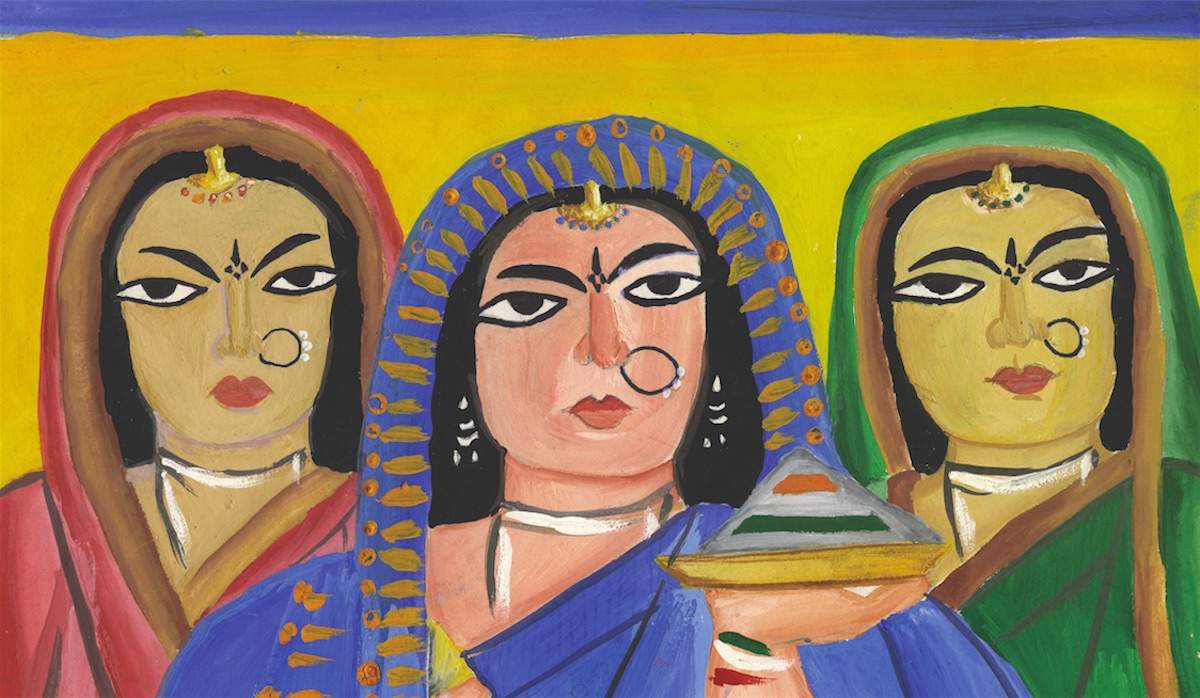
Education of women and economic empowerment are essential for equality, but not enough. (Photo Courtesy: Aseema)
Contrary to popular opinion in development circles, you have said in the past that education and economic development are not going to automatically bring about gender equality. Why do you believe that is so?
Education of women and economic empowerment are essential for equality, but not enough. For example,I know women who are medical doctors and yet are happy to be given away in kanyadaan. What value has education offered here? Has it liberated us from patriarchal practices, traditions, religions, or from caste, exploitation, class, etc.? In fact, our education system today continues to promote gender, caste, race and class hierarchies. Therefore, it is not enough to be educated if there are no values of human rights, justice, and peace that accompany learning.
We know that economic empowerment is very closely linked to equality. But that alone is not enough. Critical thinking is important, but not enough. Agency is important, but insufficient on its own. Ultimately, for me, it all comes to the values in our Constitution–equality, justice and equity. Let us begin there.
Economic empowerment is very closely linked to equality. But that alone is not enough.
In my 48 years of working at the grassroots and/or with people who work at the grassroots, I have seen that the current paradigm of development is not following these values. And we have only had this model, but it doesn’t seem to be leading us to greater equality. In fact, inequality has widened significantly. Mother Nature has been exploited over and over. India’s Green Revolution is a prime example, where lands that had been fertile for thousands of years became infertile in just 25 years. We need a new paradigm of development which is just and sustainable.
What are the new challenges faced by feminism in India? How can these be countered?
Capitalist patriarchy, the unholy marriage between patriarchy and capitalism, is the biggest backlash against feminism and all the gains that the movement has made. The billion-dollar pornography industry, sex trafficking and cosmetic industries, toy industry are all symptomatic of the spread of this form of patriarchy.
Capitalist patriarchy has objectified women like never before, reducing us to mere bodies. It has also spread hegemonic masculinity among men and also some women who wish to be powerful in the existing system. Popular media and communication channels are full of misogynistic representations of women and macho representations of men and boys. My best feminist song has been heard by maybe 100,000 people. But the worst, most anti-women songs have been heard by millions on the same day. Such is the power and reach of this new form of patriarchy.
This is going to be a very difficult, long-drawn out battle. We have to realise that women are not the only victims of patriarchy. Patriarchy affects men, too. Let us not talk only about what patriarchy is doing to women—who also internalise and perpetuate it just as much as men do; let us also talk about what it is doing to men and women, girls and boys. It is dehumanising boys and men. One doesn’t need to look far to find young boys and men raping, picking up guns, and killing others..
What role do you see for performance and poetry –both of which you use extensively in your work—in grassroots movements?
In my work at Seva Mandir and later through Jagori (which I co-founded with six colleagues), non-literate media was essential to creating inclusive and participative spaces for communities. If we were working on some campaigns, I would spend my evenings and weekends writing slogans, songs and working in street plays. Even when I was at the UN, I knew that cultural expression and creativity have been a part of people’s lives since time immemorial and people’s development has to have these cultural expressions.
Music and performance transcend cultural and geographical boundaries. In Pakistan last year, women celebrating March 8 were singing my songs. I’ve seen that in Nepal and Bangladesh, too. And it feels wonderful. Singing requires the perfect coming together of the body, the mind and the heart. Whether it is 20 people coming together to sing, or 2,000, a song can produce what no lecture or paper can. And that’s something we sanitised development workers need to understand – we can’t come here just with our brains.
Don’t miss this
1. On feminism | “Feminism has always been, and will always be, like water – fluid.”
—
2. On the importance of joining movements | “On March 8th, I go from being a drop of water, to being like the ocean.”
—
*With inputs from Nastasia Paul Gera.
The artwork used in this article is courtesy of the nonprofit Aseema. For more information, please click here.

